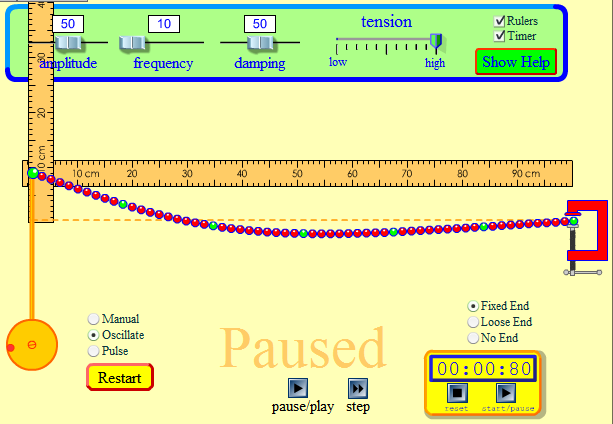
Using Physics Education Technology as Virtual Laboratory in Learning Waves and Sounds
Abstract
This research was intended to analyze the use of Physics Education Technology (PhET) as a virtual laboratory in learning waves and sounds. The analysis was in terms of the implementation of waves on a string student activity as a lesson plan, the profile of students’ cognitive, and the profile of science laboratory environment. The method which is used in this research was a descriptive method with methodological triangulation as the research design. The sample was taken on the convenient situation at grade 8 in an international school in Bandung. According to the analysis of the result, the waves on a string student activity can be adopted as the lesson plan with several recommendation to be improved such as in part A, changing some sentences in the data table, changing some settings in obtaining data activity, and adding clear example in determining the base and peak point in measuring the height of wave at start and at the end. Moreover in part B, adding clear instruction on how to use the ruler to measure the wavelength, and changing the picture to obtain the data of wavelength with the picture of simulation with the instructed setting are important. In part C, it needs to add the instruction to do the practice session together with the teacher and to add the instruction to make the starting point in counting the wave similar in each trial. The use of Physics Education Technology (PhET) as a virtual laboratory in learning waves and sounds shows the favorable result on both the cognitive aspect and science laboratory environment.
References
Abrahams, I., & Millar, R. (2008). Does practical work really work? A study of the effectiveness of practical work as a teaching and learning method in school science. International Journal of Science Education, 30(14), 1945-1969.
Arikunto, S. (2013). Dasar – Dasar Evaluasi Pendidikan. Jakarta: Bumi Aksara.
Candelas, F. A., Puente, S. T., Torres, F., Ortiz, F. G., Gil, P., & Pomares, J. (2003). A virtual laboratory for teaching robotics. Complexity, 1(10), 11.
Cohen, L., Manion, L., & Morrison, K. (2007). Research Methods in Education. New York: Taylor & Francis e-library.
Esler, J. (2011). Waves on A String Students Activity. [Online]. Retrieved from http://phet-downloads.colorado.edu/files/activities/zip/ Accessed on January 1, 2018.
Finkelstein, N. D., Adams, W. K., Keller, C. J., Kohl, P. B., Perkins, K. K., Podolefsky, N. S., ... & LeMaster, R. (2005). When learning about the real world is better done virtually: A study of substituting computer simulations for laboratory equipment. Physical Review Special Topics-Physics Education Research, 1(1), 010103.
Fisher, D., Henderson, D., & Fraser, B. (1995). Interpersonal behaviour in senior high school biology classes. Research in Science Education, 25(2), 125-133.
Fraenkel, J. R., Wallen, N. E., & Hyun, H. H. (1993). How to design and evaluate research in education (Vol. 7). New York: McGraw-Hill.
Fraser, B. J., Giddings, G. J., & McRobbie, C. J. (1992). Assessing the Climate of Science Laboratory Classes. National Key Centre for School Science and Mathematics, 8, 1-13.
Fraser, B. J., & McRobbie, C. J. (1995). Science Laboratory Classroom Environments at Schools and Universities: A Cross‐National Study∗. Educational Research and Evaluation, 1(4), 289-317.
Frewer, L., & Salter, B. (2002). Public attitudes, scientific advice and the politics of regulatory policy: the case of BSE. Science and public policy, 29(2), 137-145.
Luketic, C. D., & Dolan, E. L. (2013). Factors influencing student perceptions of high-school science laboratory environments. Learning environments research, 16(1), 37-47.
Nieh, J., & Vaill, C. (2005). Experiences teaching operating systems using virtual platforms and linux. ACM SIGCSE Bulletin, 37(1), 520-524.
Prima, E. C., Oktaviani, T. D., & Sholihin, H. (2018). STEM learning on electricity using arduino-phet based experiment to improve 8th grade students’ STEM literacy. Journal of Physics: Conference Series. 1013(1), 012030.
Prima, E. C., Putri, A. R., & Rustaman, N. (2018). Learning Solar System Using PhET Simulation to Improve Students' Understanding and Motivation. Journal of Science Learning, 1(2), 60-70.
Pyatt, K., & Sims, R. (2012). Virtual and physical experimentation in inquiry-based science labs: Attitudes, performance and access. Journal of Science Education and Technology, 21(1), 133-147.
Srisawasdi, N. (2012). Student teachers’ perceptions of computerized laboratory practice for science teaching: a comparative analysis. Procedia-Social and Behavioral Sciences, 46, 4031-4038.
Tatli, Z., & Ayas, A. (2013). Effect of a Virtual Chemistry Laboratory on Students' Achievement. Journal of Educational Technology & Society, 16(1),159-170.
Tiwari, R., & Singh, K. (2011). Virtualisation of engineering discipline experiments for an Internet-based remote laboratory. Australasian Journal of Educational Technology, 27(4), 671-692.
Tüysüz, C. (2010). The Effect of the Virtual Laboratory on Students' Achievement and Attitude in Chemistry. International Online Journal of Educational Sciences, 2(1). 37-53.
Wong, A. F., & Fraser, B. J. (1994). Science Laboratory Classroom Environments and Student Attitudes in Chemistry Classes in Singapore. Annual Meeting of the American Educational Research Association.
Woodfield, B. (2005). Virtual chemlab getting started. Pearson Education website. 25, 2005.
DOI: https://doi.org/10.17509/jsl.v1i3.11797
Refbacks
- There are currently no refbacks.
Copyright (c) 2018 Journal of Science Learning


Jl. Dr. Setiabudhi 229 Bandung 40154, West Java, Indonesia











